General Electric Company ELF VOELCB
A most uncommon object.
Exterior view
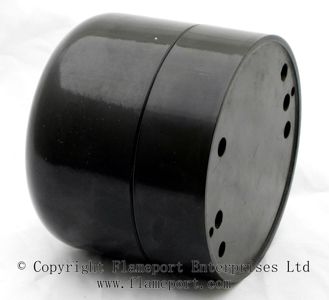
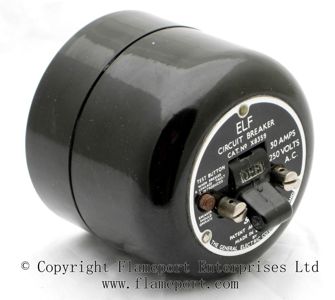 This is another voltage operated circuit breaker, but much older than either the Crabtree or Chilton types.
This is another voltage operated circuit breaker, but much older than either the Crabtree or Chilton types.
Manufactured by GEC, this is probably from the 1940s. It has never been used.
Exterior view
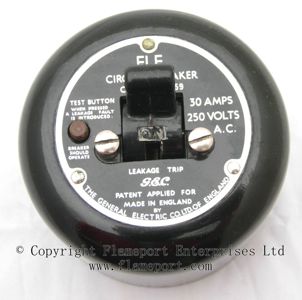
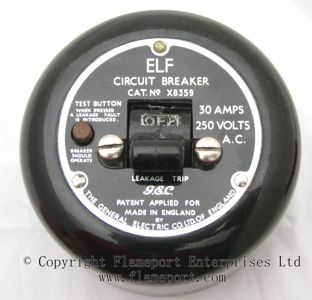 The front has the main lever, which is on in the up position. There is a small test button, and the two screws which fix the front cover also have holes through them for sealing wire.
The front has the main lever, which is on in the up position. There is a small test button, and the two screws which fix the front cover also have holes through them for sealing wire.
Label Text
ELF Circuit Breaker Cat No. X8359
30 Amps 250 Volts AC
Test Button When Pressed a Leakage Fault is Introduced
Breaker Should Operate
Leakage Trip GEC Patent Applied For
Made In England by The General Electric Co Ltd. of England
Inside
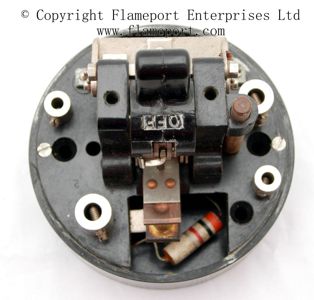
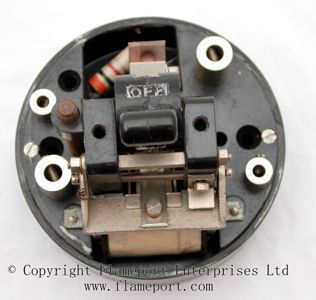 The trip coil is covered in paper, and can be seen at the lower edge of the device. It measures approximately 100 ohms.
The trip coil is covered in paper, and can be seen at the lower edge of the device. It measures approximately 100 ohms.
The resistor at the top is connected in series with the trip coil when the test button is pressed.
The resistor measures 3400 ohms, although the coloured bands indicate it should be 3000 ohms (Orange, Black, Red). The silver band indicates 10% tolerance.
The two larger terminals top right and bottom left are the incoming and outgoing line.
The smaller terminals would be connected to the earth electrode and installation earth. In normal operation, the trip coil is connected between these terminals. The test button disconnects the top left terminal and connects it to the incoming supply via the test resistor to simulate a fault.
Mechanism
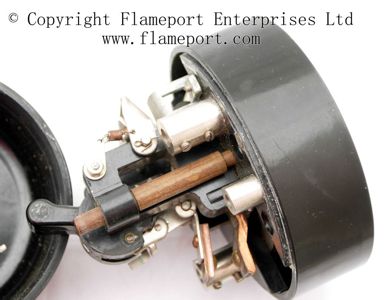
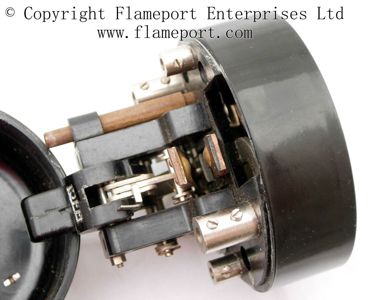 These images show the internal mechanism from above and the side.
These images show the internal mechanism from above and the side.
The main contact is visible at the top - this is a single pole circuit breaker.
The test button is just a cylindrical rod which directly presses onto the sprung metal contact.
The breaker is tripped by the hinged metal bar just above the coil - when magnetism attracts the bar towards the coil, a tiny lever releases the main switch, opening the contacts.
Additional pictures
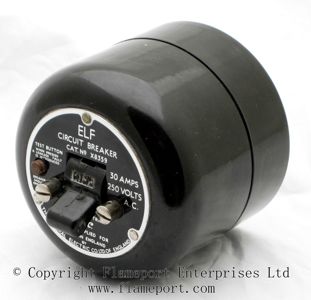
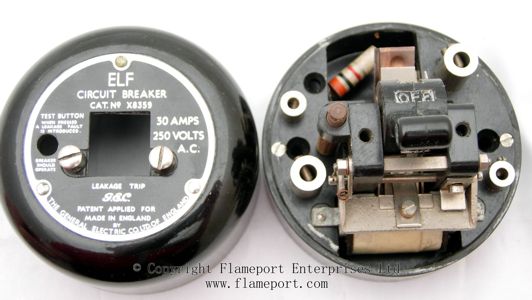 Another exterior view, and the internals with the cover alongside.
Another exterior view, and the internals with the cover alongside.
The complete device is about 75mm diameter (3 inches).
Video about this item
The device is connected to a voltage source to see if it will trip or not. View this video on Youtube.


